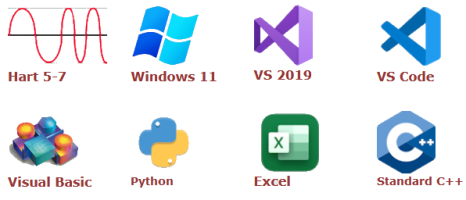
Home
Embedded Systems Firmware and Software Development
HART Slave Stack C++ 7.6 Source Code
Hart Communication Firmware for all Microcontrollers
Available for Download
The model I used to program the embedded Hart Slave is not(!) a simulation. I developed the final C++ code for the communication package. Only for faster testing the package is embedded in a
Windows dynamic link library and provided with a hardware abstraction layer for Windows.
I recommend that you take a quick look at the data sheet. There you will find the main features of the Hart Slave firmware described. In particular, the architecture and the functional interface are
explained here.
Data Sheet: Hart Slave Stack 7.6 (pdf)
Proceed to our download page to get the source code of the firmware.
The next steps in the project are:
- Migration to a Nrf52832 system
- Integration of HART-IP (Ethernet)
Hart Tools 7.6 (Windows)
HART Protocol Analyzer with Integrated Test Master +
HART Communication DLL for Windows Programming
Mastering the HART Commands of any Hart Device.
This is the ideal tool when working on developing a Hart Slave or a Hart Master.
Engineering
Software/Firmware Development and Consulting
- Development of mobile phone software (iOS, Android Apps) for field device applications (Kotlin, Xamarin, Java, C++).
- Development of sql database structures for the source code generation for parts of the firmware in embedded field devices (single source concept).
- Development of simulations of a field devices on personal computers (80 % of source code sharing).
- Integration of firmware components into field devices
- Android support,
- Linux support,
- FreeRTOS support,
- SD memory card access,
- Bluetooth interface,
- NFC interface,
- WiFi interface,
- HART classical interface (4..20 mA),
- HART-IP interface (Ethernet-APL),
- Modbus TCP IP interface and
- USB interface. - Development of web server for field devices.
- Documentation of software and firmware components.
- Development of automated testing software and firmware.
- Development of application software in C++, C#, Python, F#, Kotlin, Java, Visual Basic and VBA.
- Review of Specifications and Documentations.
Current Projects
- Development of reusable C++ source code for a
HART slave, implemented on a
nRF52840 Development Kit based on a Hart Uart Protocol or
the HART-IP Interface. - Migration of the HART FrameAlyst (HartTools) to HART-IP.




